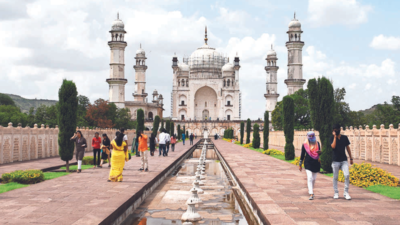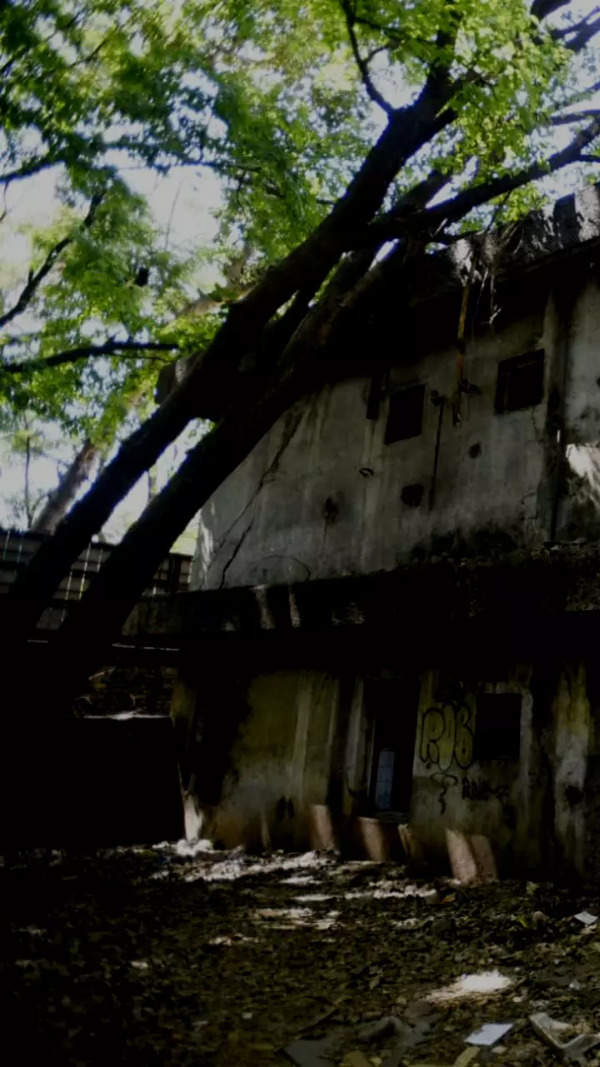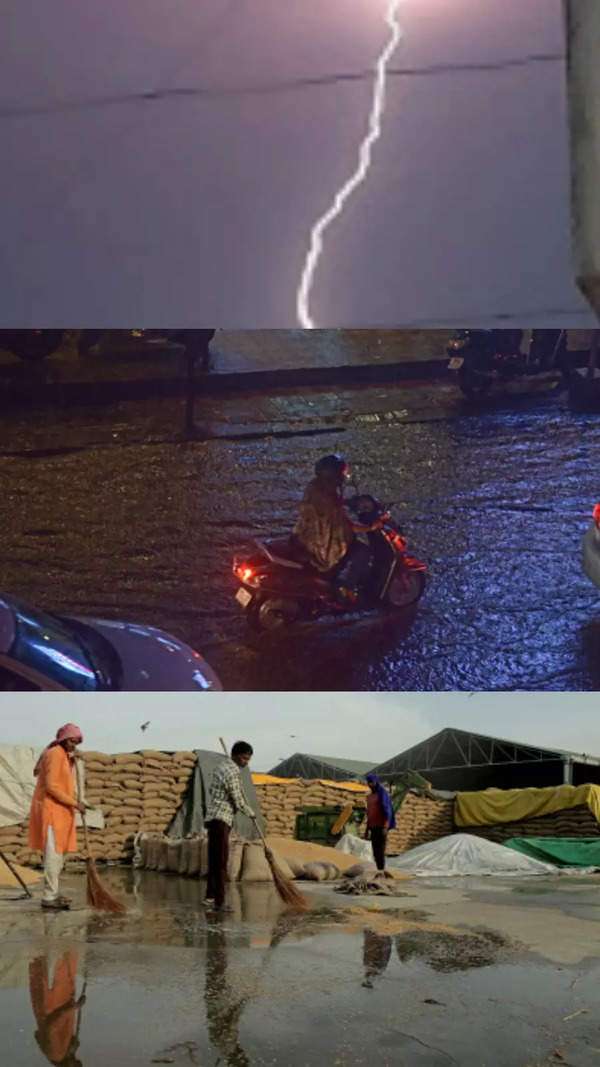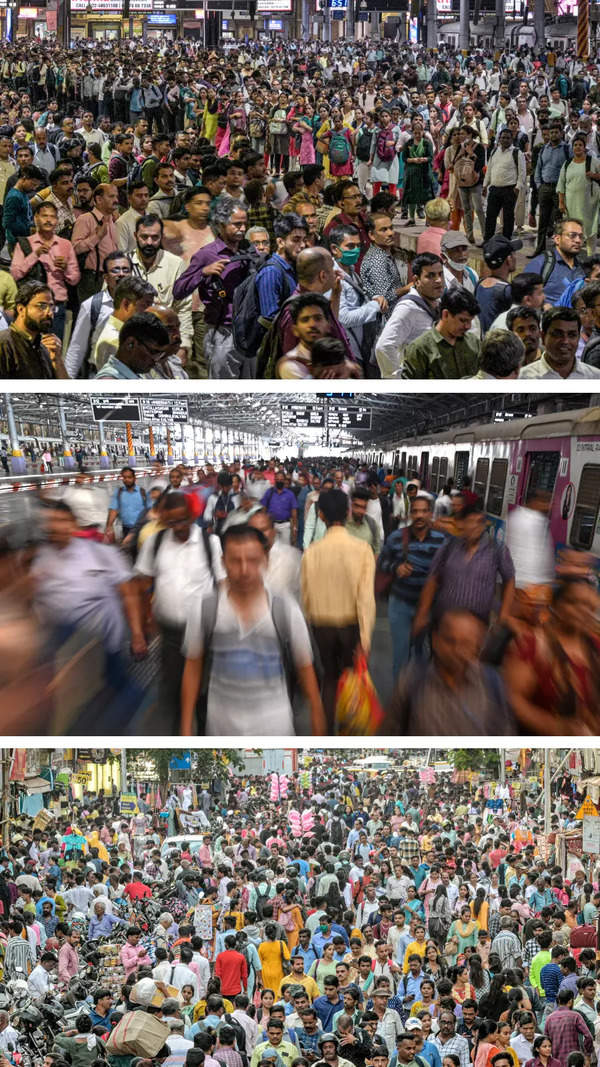Trending Topics
Bibi Ka Maqbara in Aurangabad shown signs of pollution, ASI plans impact study

Three to four lakh tourists visit Bibi Ka Maqbara every year
PUNE: Bibi Ka Maqbara, a marble and limestone tomb in Aurangabad bearing striking resemblance to the Taj Mahal, will be the first monument in Maharashtra where Archaeological Survey of India (ASI) has planned to undertake a special pollution impact assessment and also a study on the impact of climate change, including acid rain on the monument.
Srikant Mishra, deputy superintending archaeological chemist, ASI, science branch, told TOI, "One of the clearest signs of damage to monuments, especially those constructed from white marble or limestone, is the gradual yellowing of the walls mainly due to the suspended particulate matter (SPM) and other pollutants. This phenomenon is comparable to what is believed to be occurring on the Taj Mahal in Agra. Bibi Ka Maqbara is located in an urban area and pollutants in the air can have an impact on the white surface of the monument."
Mishra said three to four lakh tourists visit the monument every year. "The visiting tourists can also cause changes in the environs via increases in carbon dioxide and dust, especially in enclosed areas. Changes in the environs because of the high number of tourists could also be affecting the construction material of the monument. Hence, the study is needed."
He said, "In addition, climatic changes can cause deterioration of the surface of this monument. Climatic factors such as temperature and humidity levels will also be monitored from 6am till 10pm at the mausoleum as part of the study. The impact of these factors will later be correlated."
Mishra said the study would be over and above the regular monitoring of Nitrogen Dioxide (NO2) and Sulfur dioxide (SO2) levels in the monument. "So far, we have noticed increased amounts of SPM inside the monument during summer. The study will also assess the impact of SPM as well as carbon monoxide on the mausoleum," he said.
Experts seek pollution impact study of city monuments too
Heritage experts told TOI that similar studies should be undertaken for monuments in cities such as Mumbai and Pune, which are highly polluted.
Heritage expert Prajakta Divekar said, "Huge amounts of dust and soot settling on monuments, such as Shaniwarwada and Mahatma Phule Mandai, in the core Pune city area on a daily basis make them look uncared for.
Divekar said, "The wide-scale construction activities in the city have led to dumping of debris near the sites. The constant dust and pollution from traffic are settling on monuments like Vishrambaugwada and Mandai."
She said, "All this erodes the surfaces of structures in the long run, particularly those made of softer materials like sandstone or limestone. Over time, this erosion can cause the finer details and carvings on the monument to become less distinct and even disappear entirely." Kiran Kalamdani, an architect with expertise in heritage conservation, said, "We had cleaned the facade of Vishrambaugwada earlier. But it has now gone back to what it was, gathering soot and dust. Pollution from traffic can impact wood works in monuments and even risk them. Authorities responsible for archaeological sites in the state should undertake similar studies to see how pollutants can impact other construction material used to build these monuments. We have no laboratories to assess such aspects. As a result, studies like the one for Bibi Ka Maqbara are of importance."
Srikant Mishra, deputy superintending archaeological chemist, ASI, science branch, told TOI, "One of the clearest signs of damage to monuments, especially those constructed from white marble or limestone, is the gradual yellowing of the walls mainly due to the suspended particulate matter (SPM) and other pollutants. This phenomenon is comparable to what is believed to be occurring on the Taj Mahal in Agra. Bibi Ka Maqbara is located in an urban area and pollutants in the air can have an impact on the white surface of the monument."
Mishra said three to four lakh tourists visit the monument every year. "The visiting tourists can also cause changes in the environs via increases in carbon dioxide and dust, especially in enclosed areas. Changes in the environs because of the high number of tourists could also be affecting the construction material of the monument. Hence, the study is needed."
He said, "In addition, climatic changes can cause deterioration of the surface of this monument. Climatic factors such as temperature and humidity levels will also be monitored from 6am till 10pm at the mausoleum as part of the study. The impact of these factors will later be correlated."
Mishra said the study would be over and above the regular monitoring of Nitrogen Dioxide (NO2) and Sulfur dioxide (SO2) levels in the monument. "So far, we have noticed increased amounts of SPM inside the monument during summer. The study will also assess the impact of SPM as well as carbon monoxide on the mausoleum," he said.
Experts seek pollution impact study of city monuments too
Heritage experts told TOI that similar studies should be undertaken for monuments in cities such as Mumbai and Pune, which are highly polluted.
Heritage expert Prajakta Divekar said, "Huge amounts of dust and soot settling on monuments, such as Shaniwarwada and Mahatma Phule Mandai, in the core Pune city area on a daily basis make them look uncared for.
Divekar said, "The wide-scale construction activities in the city have led to dumping of debris near the sites. The constant dust and pollution from traffic are settling on monuments like Vishrambaugwada and Mandai."
She said, "All this erodes the surfaces of structures in the long run, particularly those made of softer materials like sandstone or limestone. Over time, this erosion can cause the finer details and carvings on the monument to become less distinct and even disappear entirely." Kiran Kalamdani, an architect with expertise in heritage conservation, said, "We had cleaned the facade of Vishrambaugwada earlier. But it has now gone back to what it was, gathering soot and dust. Pollution from traffic can impact wood works in monuments and even risk them. Authorities responsible for archaeological sites in the state should undertake similar studies to see how pollutants can impact other construction material used to build these monuments. We have no laboratories to assess such aspects. As a result, studies like the one for Bibi Ka Maqbara are of importance."

About the Author
Neha MadaanNeha Madaan is a senior feature writer at The Times of India, Pune. She holds an M A degree in Mass Communication and Journalism from University of Pune. She covers tourism, heritage development and its conservation, apart from an array of subjects such as civic issues, environment, astronomy, civic school education as well as social issues concerning persons with disabilities. Her interests include metaphysical research and animal rights.
Start a Conversation
FOLLOW US ON SOCIAL MEDIA
FacebookTwitterInstagramKOO APPYOUTUBE










